© 2025 MJH Life Sciences™ , Patient Care Online – Primary Care News and Clinical Resources. All rights reserved.
Chronic Kidney Disease: Diagnosis in Primary Care
Early detection of chronic kidney disease in primary care provides a significant opportunity to avoid complications and slow the loss of renal function. Topline guidance, here.
Guidance for primary care physicians on the diagnosis of chronic kidney disease (CKD), including identifying patients at highest risk for progression to kidney failure, is offered by the National Kidney Disease Program and the Kidney Disease Outcomes Quality Initiative.
For a concise summary of key points, click through the slides below.

CKD diagnosis in primary care for optimal outcomes. Early detection of CKD in a primary care setting offers an opportunity to avert complications before symptoms occur and to slow loss of kidney function. Patients with a CKD diagnosis from a primary care physician are more likely than patients whose CKD goes undetected to avoid risky use of NSAIDs, to use angiotensin-converting-enzyme inhibitors or angiotensin receptor blockers, and to receive appropriate nephrology care.
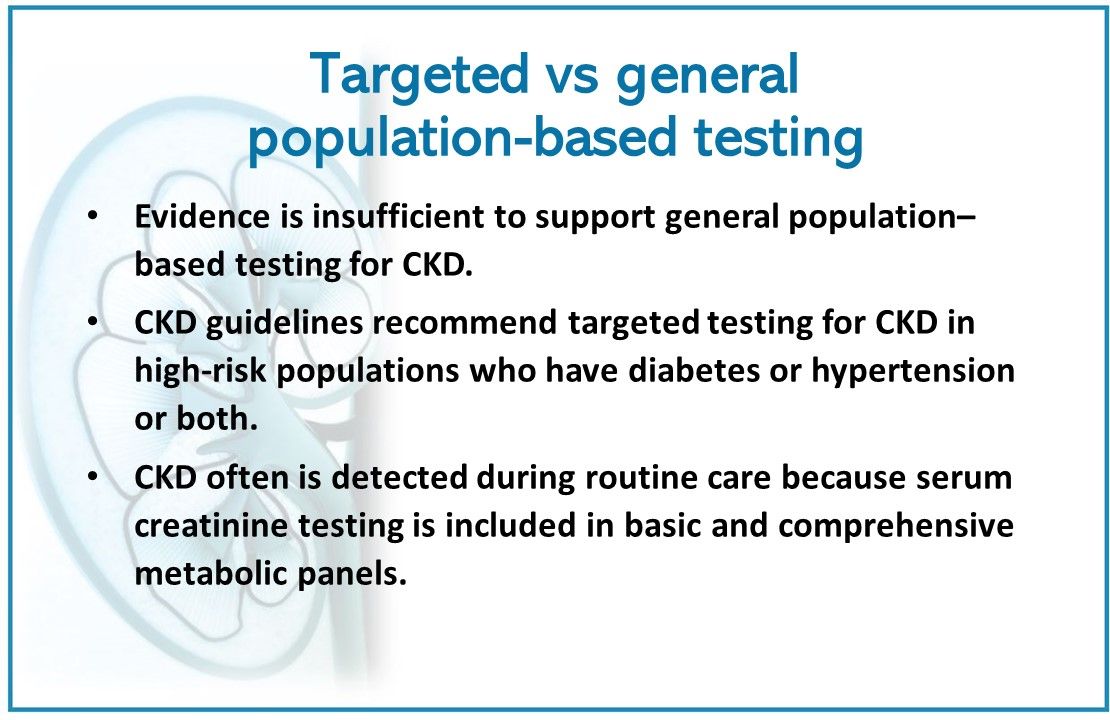
Targeted vs general population–based testing. Evidence is insufficient to support general population–based testing for CKD. Instead, targeted testing for CKD in high-risk populations who have diabetes or hypertension or both is recommended by the Kidney Disease Outcomes Quality Initiative and the Kidney Disease Improving Global Outcomes CKD guidelines. CKD often is detected during routine care because serum creatinine testing is included in basic and comprehensive metabolic panels.
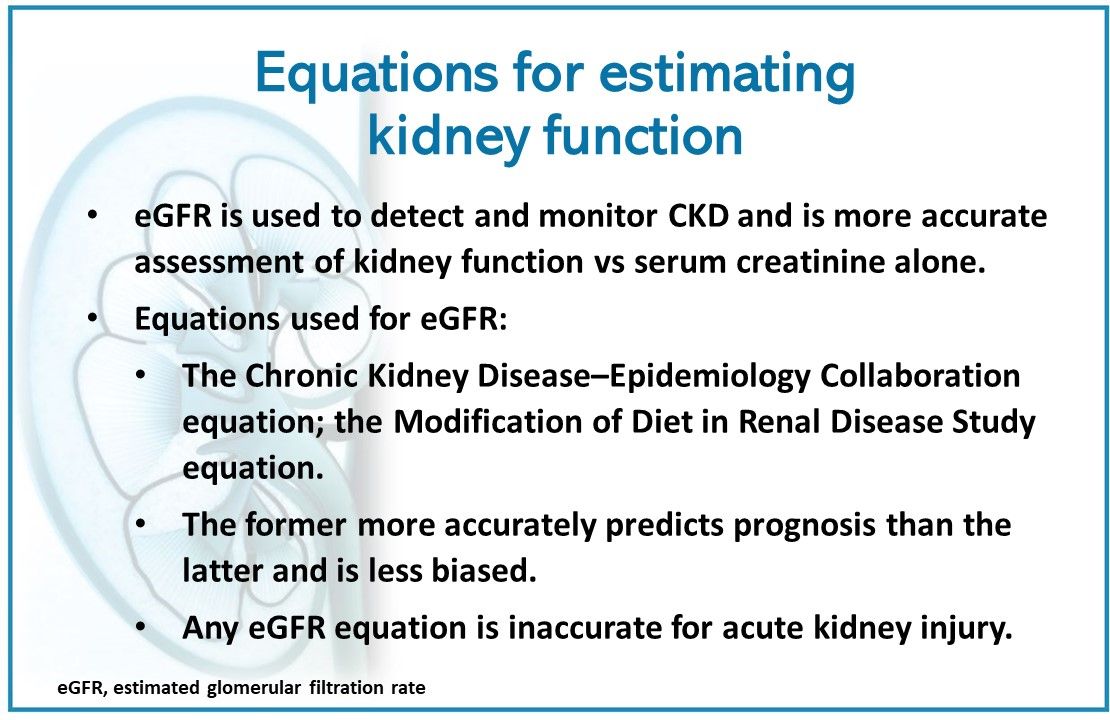
Equations for estimating kidney function. One test used to detect and monitor CKD is estimated glomerular filtration rate (eGFR). Detection of CKD based on eGFR is a more accurate assessment of kidney function than serum creatinine alone. Of the equations used for eGFR—the Chronic Kidney Disease–Epidemiology Collaboration equation and the Modification of Diet in Renal Disease Study equation—the former more accurately predicts prognosis and is less biased than the latter. Any eGFR equation is inaccurate for acute kidney injury.
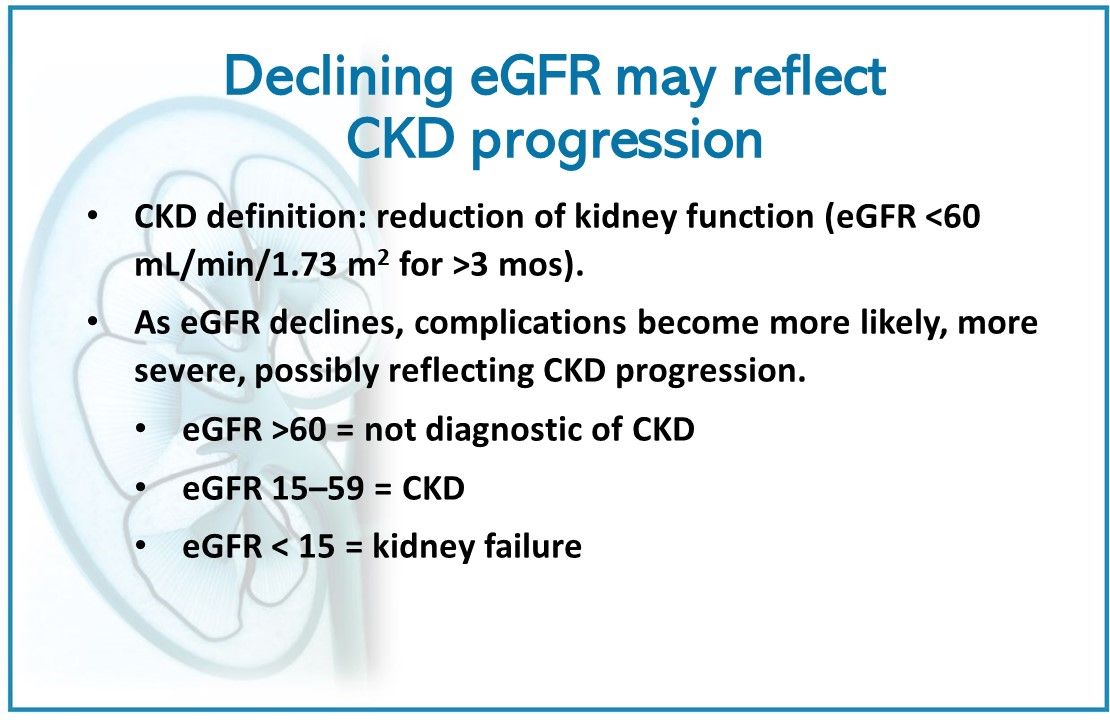
Declining eGFR may reflect CKD progression. CKD may be defined as a reduction of kidney function (eGFR < 60 mL/min/1.73 m2 for >3 months). Complications are more likely and more severe as eGFR declines, possibly reflecting CKD progression. An eGFR >60 is not diagnostic of CKD; 15–59 is CKD; <15 is kidney failure.

Most laboratories routinely report eGFR with all serum creatinine determinations in adults, but eGFR can be calculated; serum creatinine level, age, sex, and race must be entered. Current estimating equations have only an 80% to 90% chance of falling within +/-30% of the measured GFR.
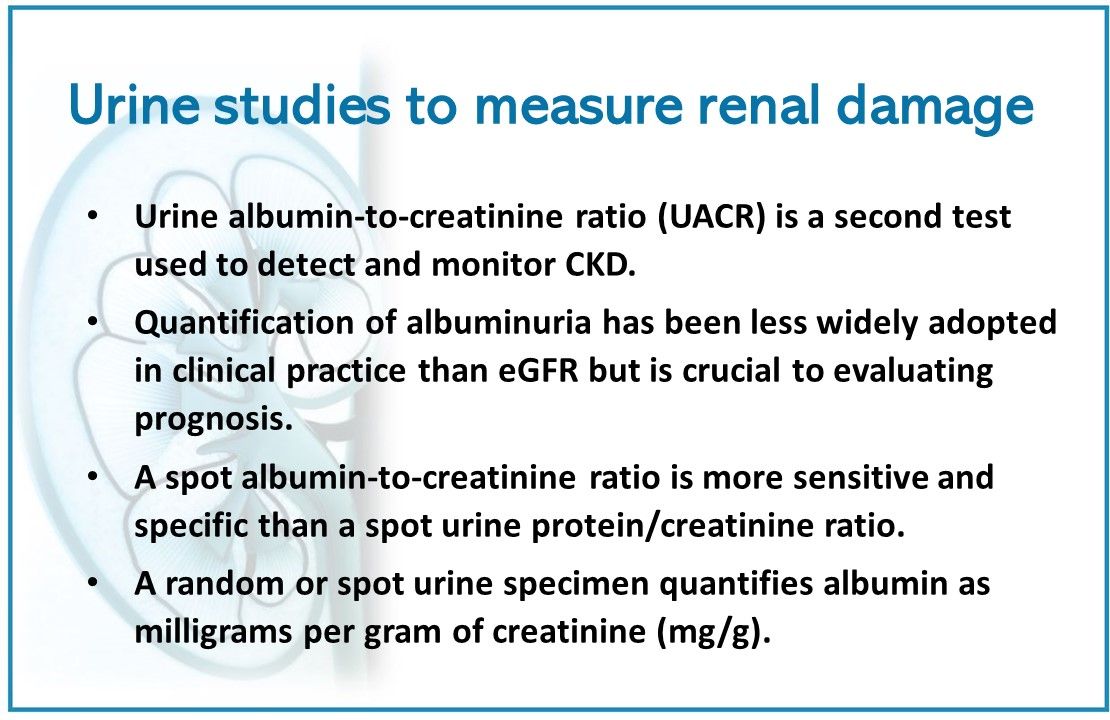
Urine studies to measure kidney damage. A second test for detecting and monitoring CKD is urine albumin-to-creatinine ratio (UACR). Quantification of albuminuria has been less widely adopted in clinical practice than eGFR but is crucial to evaluating prognosis. A spot albumin-to-creatinine ratio is a more sensitive and specific marker of CKD than a spot urine protein/creatinine ratio. A random or spot urine specimen quantifies albumin as milligrams per gram of creatinine (mg/g).
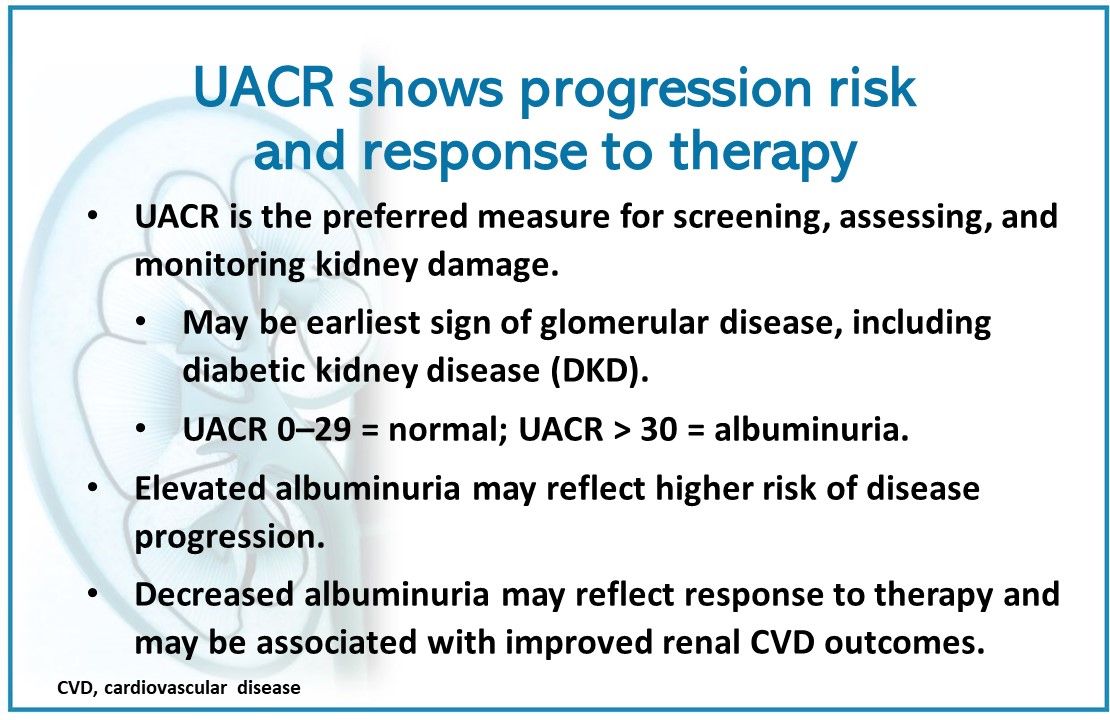
UACR shows progression risk and response to therapy. UACR, the preferred measure for screening, assessing, and monitoring kidney damage, may be the earliest sign of glomerular disease, including diabetic kidney disease (DKD). A UACR of 0–29 is normal; > 30 is albuminuria. UACR is evaluated over time to assess response to therapy and monitor CKD progression. Elevated albuminuria may reflect higher risk of progression; decreased albuminuria may reflect response to therapy and may be associated with improved renal and cardiovascular disease (CVD) outcomes.
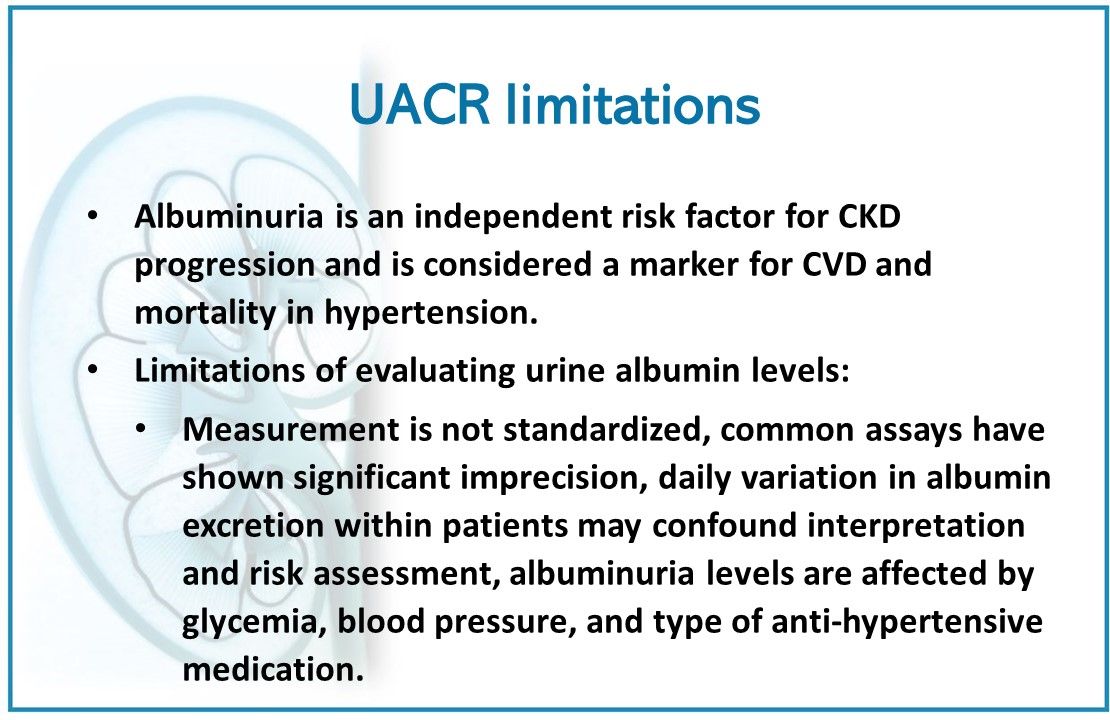
UACR limitations. Albuminuria is an independent risk factor for CKD progression and is considered a marker for CVD and mortality in hypertension. However, evaluating urine albumin levels with UACR has limitations: urine albumin measurement is not standardized; common assays have shown significant imprecision; daily variation in albumin excretion within patients may confound interpretation and risk assessment; and albuminuria levels are affected by glycemia, blood pressure, and type of anti-hypertensive medication.

Other testing to consider. Evaluation with imaging or serologic testing to identify the cause of CKD is not routinely required. Kidney and bladder ultrasound should be performed when the patient has a history of urinary tract stones or obstruction or frequent urinary tract infections or a family history of polycystic kidney disease.





